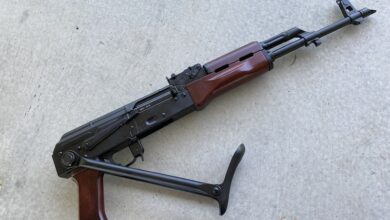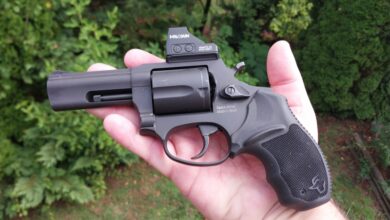Mid-Sized Pistols: Why And Where Do They Fit In?
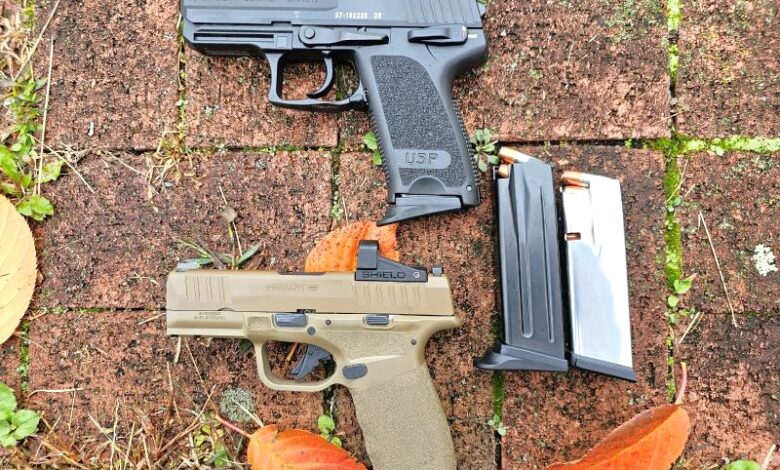
Today, we see some extraordinarily small, micro-sized pistols that we couldn’t have imagined a few decades ago. Manufacturers have engaged each other in a war to shave off fractions of ounces and inches, and they’ve succeeded in offering us pistols that carry far more ammunition than their diminutive size gives us any right to expect. The same goes for their accuracy, in that it’s so good.
With these little wonders available to us, is there anything else we could ever hope for? Maybe, just maybe, we yearn for a little more.
Trends
Remember back in the 1980s when the Glock 17, Sig’s P226, and H&K’s USP came on the scene? Smith & Wesson had the 5903 and 5906 3rd Generation of autos. Capacity was king, and these autos had lots of it. Most were accurate and carried a lot of rounds. Well, what we considered a lot of rounds in those days; normally around 15 or so.
But they were big. I mean, really big. Those who carried such monstrosities had wished for lighter, more compact pistols. Manufacturers acquiesced by chopping off a little bit of the barrel here, a little of the grip length there, slightly reducing the magazine capacities, and voila! Smaller, lighter pistols!

We marveled at the Glock 19, and without a doubt, it’s still one of the epic pistols of the world, even to this day. Sig’s P228 was seen as a major boon, allowing us the luxury of a smaller version of its big brother. Smith & Wesson offered smaller versions, such as the 3913. Even Beretta came out with a compact version of their 92. These are just a few, as many more compact models were springing up.
Life was good, and we were livin’ large with our less-than-large pistols. Until we wanted more (and doesn’t it seem like we always want more?). And by wanting more, I mean we wanted less.
Subcompacts
The Compacts eventually gave way to the subcompacts, which were often pistols with even more of the grip and barrel lopped off. The best examples that I can think of for this are Glock’s subcompacts, such as the Glock 26 in 9mm, and other similarly sized subcompacts in various calibers, such as .40 S&W and .45 ACP.
The advantages were that they were, indeed, smaller and lighter than their larger brethren. They could also still accept the magazines of their full-size counterparts. There were some parts commonality, as well.
At the end of the day, though, these subcompacts were thick and offered extremely short grips, which made getting a full grip on them nigh on impossible. But they were the best we had at the time, so we sallied forth to fight the forces of evil, armed with these stubby little pistols. They served well enough, of course, and some folks still love to carry them.
Progress – Age Of The Micro-9s
After a long and circuitous route, we finally arrived at the Age Of The Micro-9s. I’m not talking about the tiny pistols that shoot small calibers, or even 9mm. You know, the ones that are so small that you can’t acquire an actual shooting grip on them, the ones that keep your fingers dangling in space, with recoil so sharp it hurts the hand.
The micro-9s I’m referring to actually allow the shooter to obtain an honest-to-goodness firing grip. They also exhibit excellent accuracy at ranges far beyond what we might imagine to be realistic. Finally, their capacity is high enough that we’re left scratching our heads and wondering how the engineers stuffed so many rounds into such a small package.
Which pistols am I referring to? Sig’s P365, Springfield’s Hellcat, Glock’s G43, S&W’s M&P Shield Plus, Ruger’s Max 9, FN’s Reflex, and a host of others.
Given this progression of pistols and the point at which we finally arrived, one might suspect that we’re at the end of the road as far as pistol development is concerned. I mean, we’ve got very small guns that are accurate and carry a half-million rounds – what more could we possibly ask for?
That’s a good question because shooters have an answer.
A Little Bigger
Despite the tiny options, some shooters seem to yearn for pistols that are just a little larger. This is why manufacturers have done a kind of rebound, offering up-sized versions of their tiny pistols.
A few examples are Glock’s 43X. Their G43 was a hit, but it only holds six rounds, and the grip is small, perhaps too small for some shooters. The 43X offers a more hand-filling grip that people can really get ahold of. It’s the same length as the Glock 19 grip, but it’s basically a single-stack magazine (okay, maybe a 1 1/2 stack). The Glock 19-length grip that is slimmer seems to be a sweet spot, as it feels outstanding in the hand and allows excellent control and accuracy. Unfortunately, the 43X only holds ten rounds, and most of the micro-9s either match it or beat it in the accuracy department. That said, the 43X gives the shooter more gun in his or her hand, and sometimes, people want that “more gun” feel and handling.
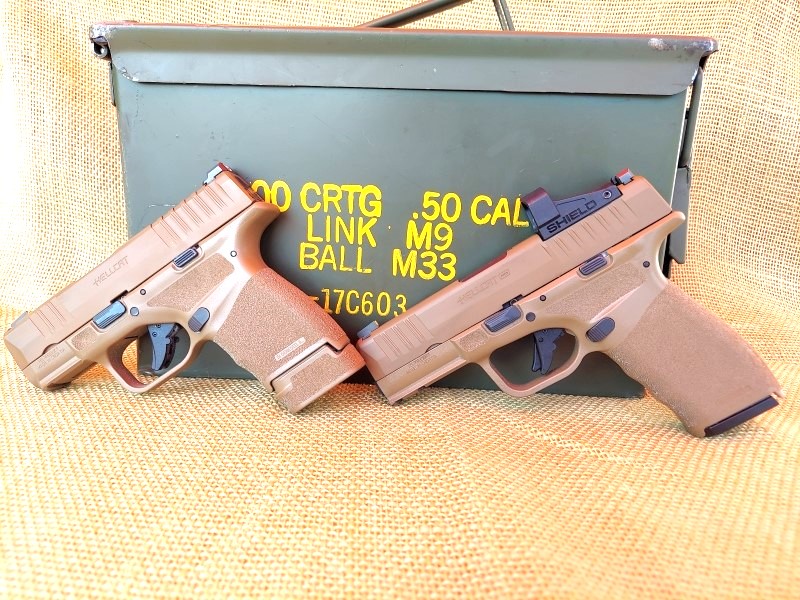
The Springfield Armory Hellcat grew into the Hellcat Pro, which is a scaled-up model of its smaller brother. Again, the grip is something that we can really get ahold of, and gives the shooter the sense that he or she is holding a real pistol as opposed to a child’s cap gun. The fact that the Hellcat Pro holds 15 rounds as a standard payload sure doesn’t hurt any, either.

But Why?
Are these mid-sized pistols just something that gun makers are handing out to the masses simply because there’s a market for them and people demand them? I’d say no; I think there’s a little more to it than that.
What do all of these pistols have in common? They’re slightly larger versions of their little brothers that offer a fuller grip, which gives shooters more control. They are also typically more accurate than the little micro-pistols because of their longer sight radius and longer barrels. And they hold more rounds than their smaller versions. In short, they give enhanced performance at the cost of a little more weight and size.
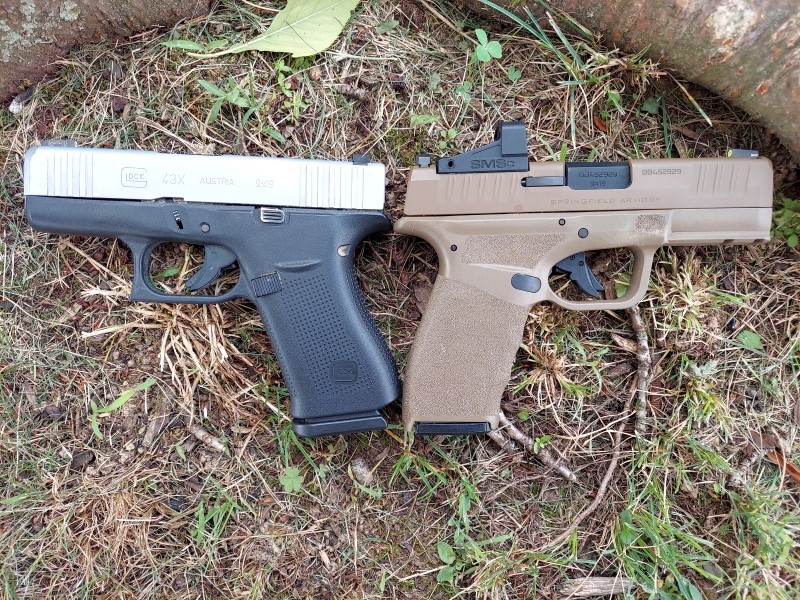
Another important point is that they are easier to shoot in terms of muzzle flip. The smaller guns simply have more snap at the range, and sometimes people don’t appreciate the snappiness, and the larger pistols solve that issue. How? Their longer grips give shooters something more to hang onto.
Pistols that have grips that are so short that the pinky finger hangs off the grip force us to sacrifice hand strength. You see, the pinky finger accounts for approximately 50% of our grip strength, so if you can’t obtain a full grip on the pistol, you’re missing out. Even on pistols with a little extension on the magazine, the rear of the pistol grip is often so short that it concludes part way down the shooter’s palm, causing it to dig into the palm. It’s not generally painful, but it creates a sort of pivot point, which does not lend itself to good handling. Longer grips are fully supported to the bottom of the shooter’s hand, allowing us to take advantage of that leverage.
When And Where?
In what circumstances do people choose to carry larger pistols, and why? I’ve heard quite a few people whom I respect give opinions on this, and most seem to give more or less the same rationale. Mine coincides with theirs, so I’ll kind of sum it up here.
Sometimes, it just depends on the mood. I might want to carry a somewhat larger pistol just because I feel like it. And if it happens to be a larger version of the smaller gun I carry (for example, the P365 and the P365XL), I’m not at a disadvantage because both guns have exactly the same manual of arms, so there’s no need for me to have to adjust the way I operate the pistol. I’m carrying the same basic core pistol, but one that’s just different enough to satisfy my urge for variety. Being able to choose different grip lengths and barrel lengths can scratch that itch.
Maybe I’m going to an area that’s known for higher crime or just plain sketchy. In most instances, I’d tell people, “Well, just don’t go to that area; it’s not a good place to be.” That’s nice, but sometimes, we don’t have much of a choice. For example, I once had a job where I delivered items to some very high-crime areas. In these cases, I might want a little extra firepower, accuracy, and speed, so concealability takes a back seat to these other qualities.
Some people change with the seasons. Where I live in the winter, it’s mostly sweatshirts and flannel shirts. Concealing a larger firearm is no problem at all, so having a mid-sized pistol along for the ride is easy. In the summer, when we’re wearing shorts and a T-shirt, the little brother pistol might be more convenient. So, we can adjust our carry according to our dress and the seasons.
Final Thoughts
The options we have currently for carrying pistols are dazzling, and it’s a great time to be alive. These mid-sized pistols allow us to further tailor our choices of carry to several factors, including the climate and environment in which we’ll be carrying them.
The fact that we don’t have to change the manual of arms if we have guns from the same manufacturer just solidifies this strategy even more. Another selling point is that the magazines from the mid-sized pistols often will fit into the micro-sized pistols, giving the little brothers larger ammo capacity options for carrying spare ammunition.
The additional control, accuracy, and comfort with which we can operate these slightly larger pistols seal the deal for many folks and further cements the notion that the demand for these “micro pistols on steroids” is indeed justified and intelligent.
I find the evolution of carry pistols to be fascinating. This latest trend created an entirely new class of carry pistols to supplement the Duty Size, Compact, and Micro classes that we’ve previously seen. One thing is for certain: mid-sized pistols are here to stay.
The post Mid-Sized Pistols: Why And Where Do They Fit In? appeared first on The Mag Life.
Read the full article here

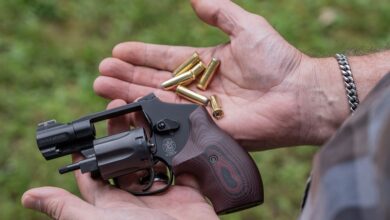
![Timney’s NEW AK Drop-In Trigger [VIDEO] Timney’s NEW AK Drop-In Trigger [VIDEO]](https://firearm-discounts.com/wp-content/uploads/2024/09/Video-Thumbnail_Timney-AK-trigger-390x220.png)
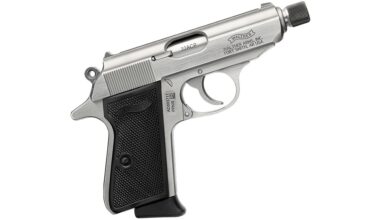
![Aero Precision NEW Tephra-22 Suppressor [First Look] Aero Precision NEW Tephra-22 Suppressor [First Look]](https://firearm-discounts.com/wp-content/uploads/2024/09/Aero-Suppressors-3-scaled-390x220.jpg)
